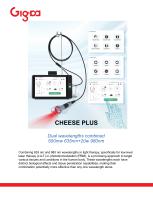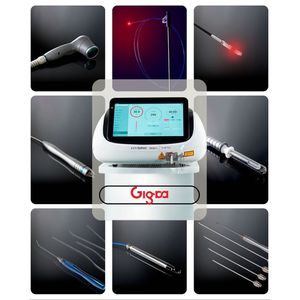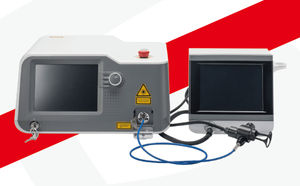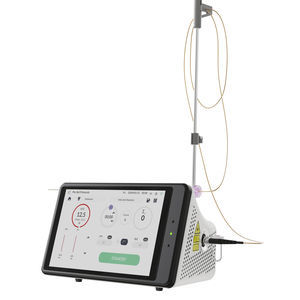
Onychomycosis treatment laser CHEESE PLUSdiodetabletopclass 4

Add to favorites
Compare this product
Characteristics
- Applications
- onychomycosis treatment
- Amplifying medium
- diode
- Ergonomics
- tabletop
- Laser class
- class 4
- Wavelength
450 nm, 650 nm, 810 nm, 1,064 nm
- Average power
0.2 W, 0.5 W, 3 W, 10 W, 15 W
Description
High-density Diode laser for Podiatry
Diode lasers at various wavelengths, including 650nm, 450nm, and 1064nm, are commonly used in podiatry for therapeutic and surgical purposes.
When using diode lasers in podiatry, the treatment protocols, including power settings, will vary depending on the wavelength, the condition being treated, and the desired therapeutic effect. Below is a breakdown of common treatments that use 650nm, 450nm, and 1064nm diode lasers, as well as some general power-setting guidelines for each wavelength.
The use of 650nm, 450nm, and 1064nm diode lasers for nail matrix ablation offers a comprehensive and non-invasive approach to treating nail-related conditions such as ingrown nails, nail deformities, or nail infections. The three wavelengths target different aspects of the procedure: precision cutting with 650nm, infection control with 450nm, and deep tissue healing and pain management with 1064nm. This combination helps to improve the success rate, reduce complications, and accelerate recovery for patients undergoing nail matrix ablation.
Dentistry
The four wavelengths of 450nm, 650nm, 810nm, and 1064nm have different applications in dentistry. Here are the main uses of these wavelengths in dentistry:
450nm wavelength: The laser beam of this wavelength can be used for certain soft tissue surgeries, such as excision and incision. It can effectively reduce bleeding and tissue damage, thereby accelerating healing and reducing pain and discomfort for patients.
650nm wavelength: The laser beam of this wavelength can be used for biostimulation and pain treatment. It can promote healing and tissue regeneration,
VIDEO
Catalogs
CHEESE Plus
2 Pages
CHEESE PLUS THERAPY
4 Pages
Exhibitions
Meet this supplier at the following exhibition(s):


Related Searches
- Aesthetic medicine laser
- Diode laser
- Tabletop laser
- Dermatology laser
- Millisecond laser
- Surgical laser
- Class 4 laser
- Physical therapy laser
- Dental laser
- Microsecond laser
- Physical biostimulation laser
- Vascular lesion treatment laser
- Ophthalmic laser
- Lipolysis laser
- ENT surgery laser
- Gynecological surgery laser
- Podiatry laser
- Urological laser
- Dental surgery laser
- Varicose vein treatment laser
*Prices are pre-tax. They exclude delivery charges and customs duties and do not include additional charges for installation or activation options. Prices are indicative only and may vary by country, with changes to the cost of raw materials and exchange rates.












